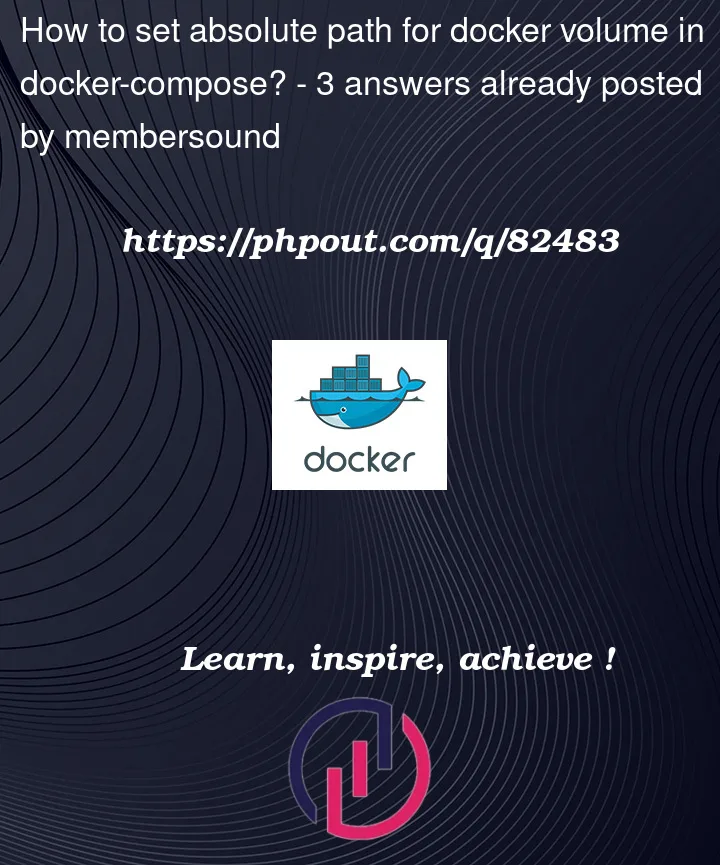I have a quite simple docker-compose.yml that creates an initial volume for a mysql container:
version: '3.7'
services:
db:
image: mysql:8.0
volumes:
- database:/var/lib/mysql
volumes:
database:
name: mysql-database
Question: how can I tell docker to create the volume on a specific absolute path on first startup, instead of creating it at /var/lib/docker/volumes/mysql-database/?
I would like to set the target path to /mnt/docker/volumes/mysql-database/ for having it on another disk. But only this volume, not all docker volumes!
Is that possible?




3
Answers
I found a way to create a "named bind mount", having the advantage that
docker volume lswill still show the volume, even it is a bindmount:Create:
docker volume create --driver local --opt type=none --opt device=/mnt/docker/volumes/mysql-database --opt o=bind mysql-databaseUsage:
Maybe not use the volumes section since you don’t know where docker puts your data.
So, specify the full path. It does work for our installation.
Interested to know when this does not work for your situation.
With the
localvolume driver comes the ability to use arbitrary mounts; by using a bind mount you can achieve exactly this.For setting up a named volume that gets mounted into
/mnt/docker/volumes/mysql-database, your docker-compose.yml would look like this:By using a bind mount you lose in flexibility since it’s harder to reuse the same volume. But you don’t lose anything in regards of functionality